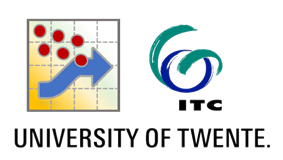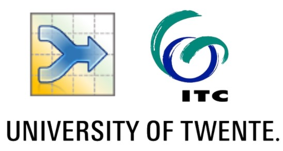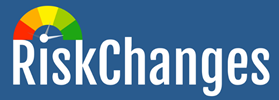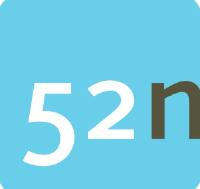Sharing of open software tools and algorithms for hazard, risk & resilience is one of the aims of the CDR. We aim to provide tools for hazard modelling, python scripts for geo-processing, risk assessment etc. Some examples:
OpenLISEM

Lisem (Lisem Integrated Spatial Earth Modeller) is a free and open-source software tool that allows users to manipulate geo-spatial data. Featuring both simple operations and advanced algorithms, complex models can be developed. The tool features an internal scripting environment designed for easy data manipulation, a geospatial data viewer, and the LISEM model, which aims at simulation of Hydro-meteorological surface hazards. Additionally, the software comes with Python bindings that allow for interactions with other libraries and automization of code. Have a look at the documentation for more information on how to use and install LISEM.
FASTFLOOD

The fastflood model is a super-fast flood simulation tool. The method employs several unique algorithms to get over 97% accuracy compared to traditiona modelling, 1500 times faster. Developed originally in 2021, and expended and improved in the past years, the method is now available as a web-based model. Available for free, without download or account required. You can use the tool to automatically download the relevant data from (lower quality) global datasets, or upload your own data. The simulation app features mitigation design, coastal and fluvial boundary conditions, precipitation scenario's, infiltration and more. At this moment, the tool is in beta, and it is not meant as a replacement for full food simulation methods. Calibration and validation is a strict requirement for valid application of the model. We do not make any guarantees, but please contact us if you are interested in validation, setup or consultancy for your area of study. In the meantime, we are rapidly moving into the direction of operation-ready technology and hope you find the website usefull. Fastflood might be the ideal tool for enabled informed discussions, mitigation sketching, rapid assessment in constrained environments, data preparation and initial studies.
HYPERSPECTRAL PYTHON- HYPPY
 Unlock the full potential of hyperspectral imaging with HypPy, a suite of tools developed at the University of Twente. HypPy can be used for creating workflows and supports the ENVI file format. It offers an intuitive viewer for both hyperspectral images and spectral libraries. Enhance your data analysis with an array of features including Band Math, Spectral Math, PCA, and inverse PCA. Our tools like the Spectral Angle Mapper (SAM), Rule image classifier, and Linear Unmixing enable image classification and data interpretation. Whether you prefer a graphical user interface or the efficiency of a command-line interface for scripting, HypPy’s comprehensive manuals will guide you through every step. Transform your hyperspectral imaging experience with HypPy, where advanced functionality meets user-friendly design. Reference DOI 10.5281/zenodo.11204367. Link HypPy
Unlock the full potential of hyperspectral imaging with HypPy, a suite of tools developed at the University of Twente. HypPy can be used for creating workflows and supports the ENVI file format. It offers an intuitive viewer for both hyperspectral images and spectral libraries. Enhance your data analysis with an array of features including Band Math, Spectral Math, PCA, and inverse PCA. Our tools like the Spectral Angle Mapper (SAM), Rule image classifier, and Linear Unmixing enable image classification and data interpretation. Whether you prefer a graphical user interface or the efficiency of a command-line interface for scripting, HypPy’s comprehensive manuals will guide you through every step. Transform your hyperspectral imaging experience with HypPy, where advanced functionality meets user-friendly design. Reference DOI 10.5281/zenodo.11204367. Link HypPy
Nutshell
A GUI for the freeware Geographical Information System PCRaster. This is an independent development. Comes with a map editor "mapedit". Can make a link with GDAL for conversions. The GIT repository is available linked to PCRaster and available here.
RiskChanges
 RiskChanges is an open-source Spatial Decision Support tool for the analysis of Dynamic Multi-Hazard risk. A Spatial Decision Support System (SDSS) is a “Interactive computer systems designed to support a user or a group of users in achieving a higher effectiveness of decision making while solving a semi-structured spatial decision problem”. An SDSS has an explicit geographic component; it is supporting rather than replacing the user’s decision making skills, and facilitates the use of data, models and structured decision processes in decision making. The RiskChanges spatial decision support system has been developed with the aim to analyse the effect of risk reduction planning alternatives on reducing the risk now and in the future, and support decision makers in selecting the best alternatives.
RiskChanges is an open-source Spatial Decision Support tool for the analysis of Dynamic Multi-Hazard risk. A Spatial Decision Support System (SDSS) is a “Interactive computer systems designed to support a user or a group of users in achieving a higher effectiveness of decision making while solving a semi-structured spatial decision problem”. An SDSS has an explicit geographic component; it is supporting rather than replacing the user’s decision making skills, and facilitates the use of data, models and structured decision processes in decision making. The RiskChanges spatial decision support system has been developed with the aim to analyse the effect of risk reduction planning alternatives on reducing the risk now and in the future, and support decision makers in selecting the best alternatives.
ILWIS / 52North
 The Integrated Land and Water Information System (ILWIS) is a PC-based GIS & Remote Sensing software, developed by ITC up to release 3.3 in 2005. ILWIS comprises a complete package of image processing, spatial analysis and digital mapping. It is easy to learn and use; it has full on-line help, extensive tutorials for direct use in courses and 25 case studies of various disciplines.
The Integrated Land and Water Information System (ILWIS) is a PC-based GIS & Remote Sensing software, developed by ITC up to release 3.3 in 2005. ILWIS comprises a complete package of image processing, spatial analysis and digital mapping. It is easy to learn and use; it has full on-line help, extensive tutorials for direct use in courses and 25 case studies of various disciplines.
As per 1 July 2007, ILWIS software is freely available ('as-is' and free of charge) as open source software (binaries and source code) under the 52°North initiative (GPL license). This software version is called ILWIS Open.
ILWIS support by ITC has been stopped. For support. Go the 52°North web page for the latest version of ILWIS Open, downloads and documentation.
Charim (CARIBBEAN HANDBOOK ON RISK MANAGEMENT)
The aim of this on-line handbook is to support the generation and application of landslide and flood hazard and risk information to inform projects and program of planning and infrastructure sectors, specifically targeted to small countries in the Caribbean region. The methodology centers around a series of use cases, which are practical examples. The handbook is made of 3 interlinked components: 1. Use case book, 2. Methodology book, 3. Data management book, This book will detail the types and quality of data needed for activities at different scales and methods for data creation and sharing. (https://www.cdema.org/virtuallibrary/index.php/charim-hbook/why-charim)
UN APCICT
 Handbook UN APCICT on ICT for Disaster Risk Management. This module introduces disaster risk management (DRM) and provides an overview of how information and communication technologies (ICTs) can be used for DRM. A large number of examples and case studies on the applications of ICTs in DRM have been included in the module.
Handbook UN APCICT on ICT for Disaster Risk Management. This module introduces disaster risk management (DRM) and provides an overview of how information and communication technologies (ICTs) can be used for DRM. A large number of examples and case studies on the applications of ICTs in DRM have been included in the module.

